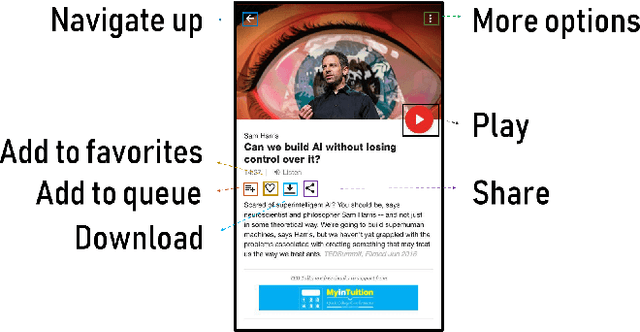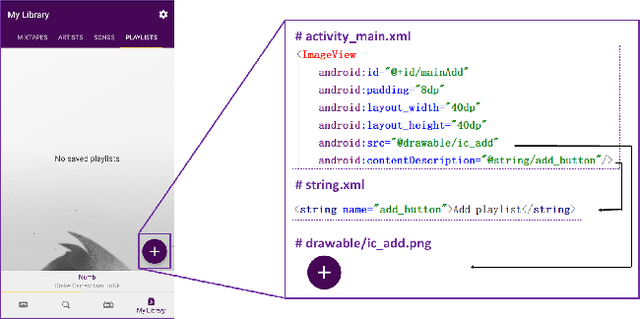Unblind Your Apps: Predicting Natural-Language Labels for Mobile GUI Components by Deep Learning
Paper and Code
Mar 01, 2020



According to the World Health Organization(WHO), it is estimated that approximately 1.3 billion people live with some forms of vision impairment globally, of whom 36 million are blind. Due to their disability, engaging these minority into the society is a challenging problem. The recent rise of smart mobile phones provides a new solution by enabling blind users' convenient access to the information and service for understanding the world. Users with vision impairment can adopt the screen reader embedded in the mobile operating systems to read the content of each screen within the app, and use gestures to interact with the phone. However, the prerequisite of using screen readers is that developers have to add natural-language labels to the image-based components when they are developing the app. Unfortunately, more than 77% apps have issues of missing labels, according to our analysis of 10,408 Android apps. Most of these issues are caused by developers' lack of awareness and knowledge in considering the minority. And even if developers want to add the labels to UI components, they may not come up with concise and clear description as most of them are of no visual issues. To overcome these challenges, we develop a deep-learning based model, called LabelDroid, to automatically predict the labels of image-based buttons by learning from large-scale commercial apps in Google Play. The experimental results show that our model can make accurate predictions and the generated labels are of higher quality than that from real Android developers.
 Add to Chrome
Add to Chrome Add to Firefox
Add to Firefox Add to Edge
Add to Edge